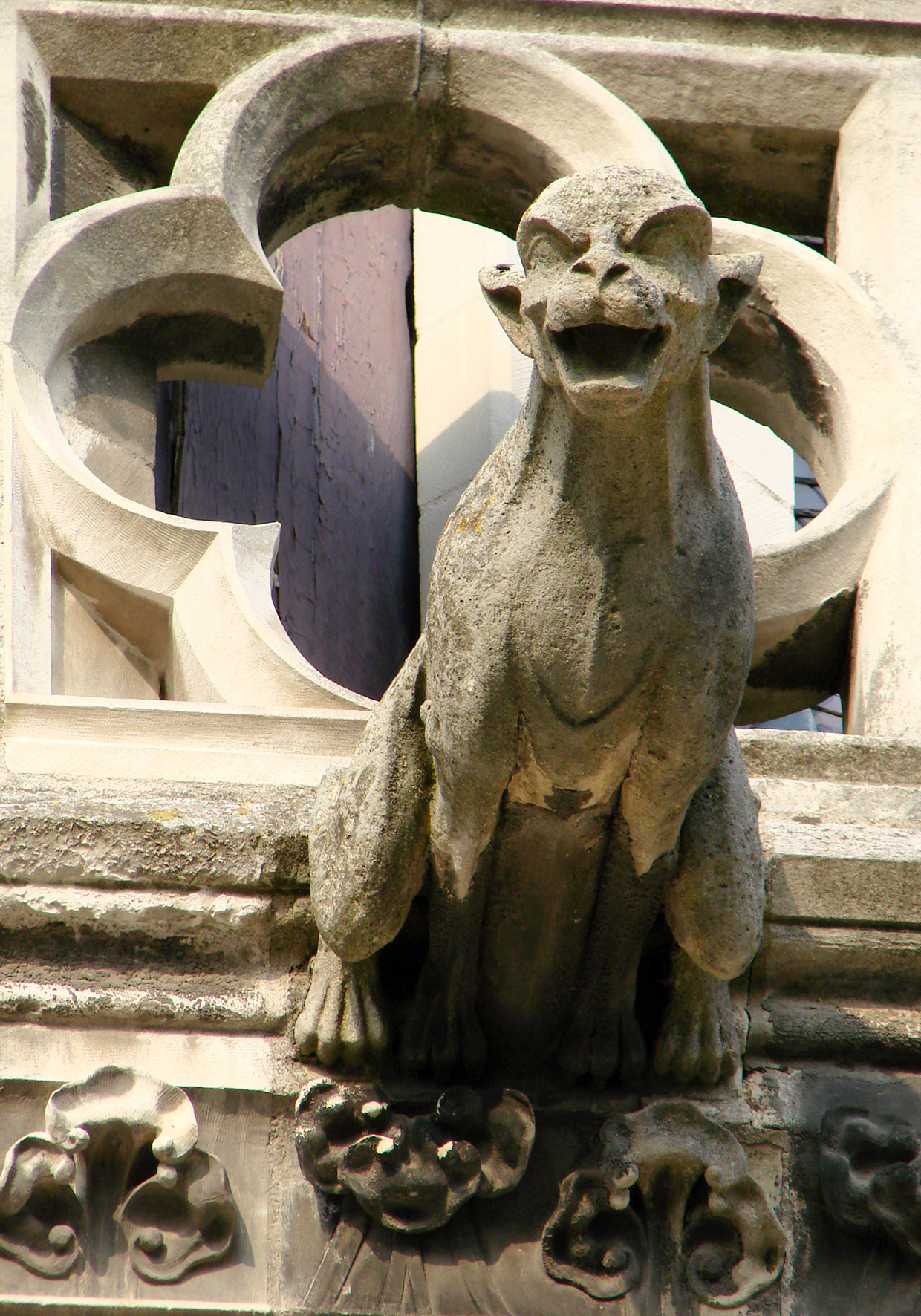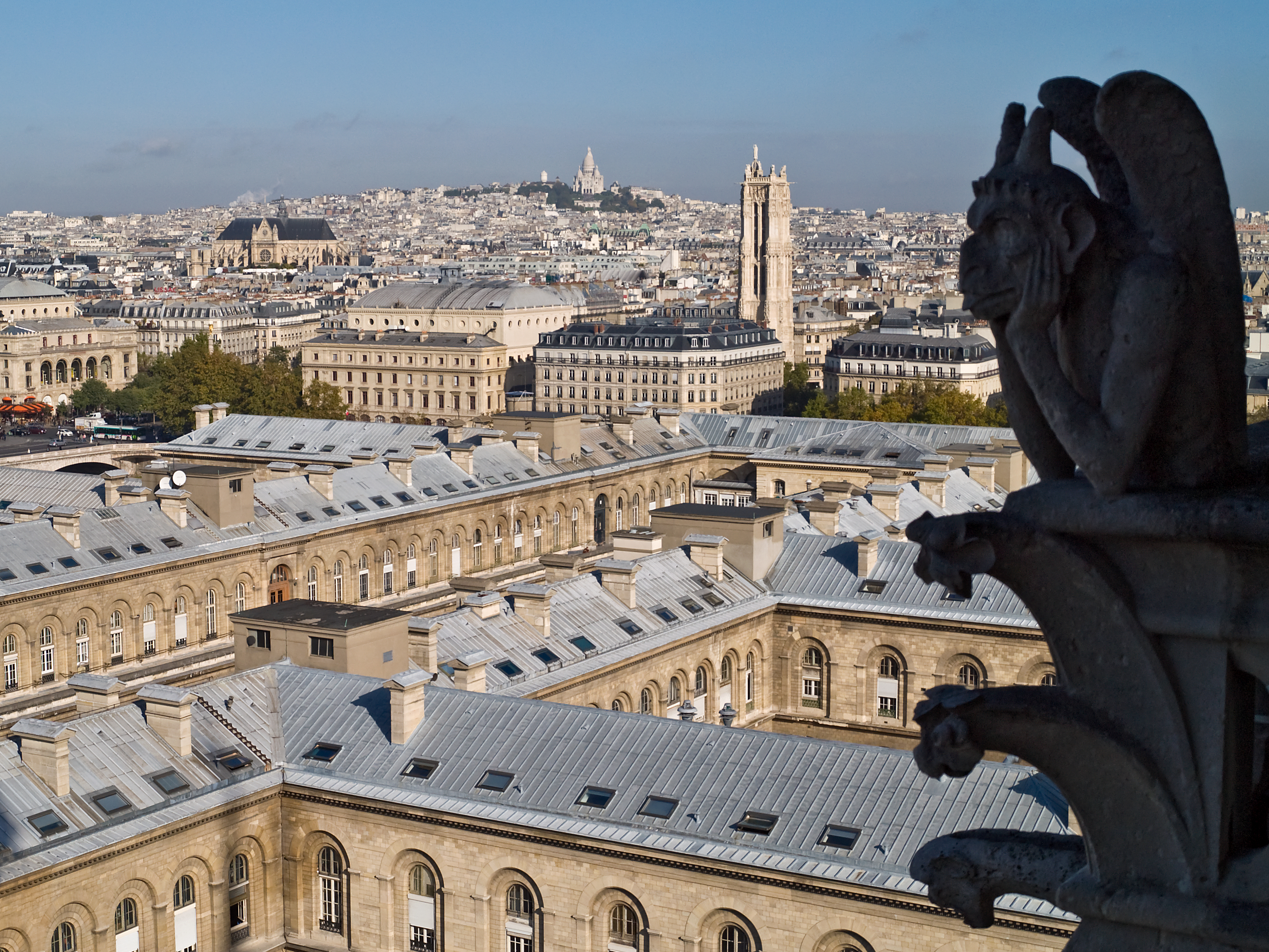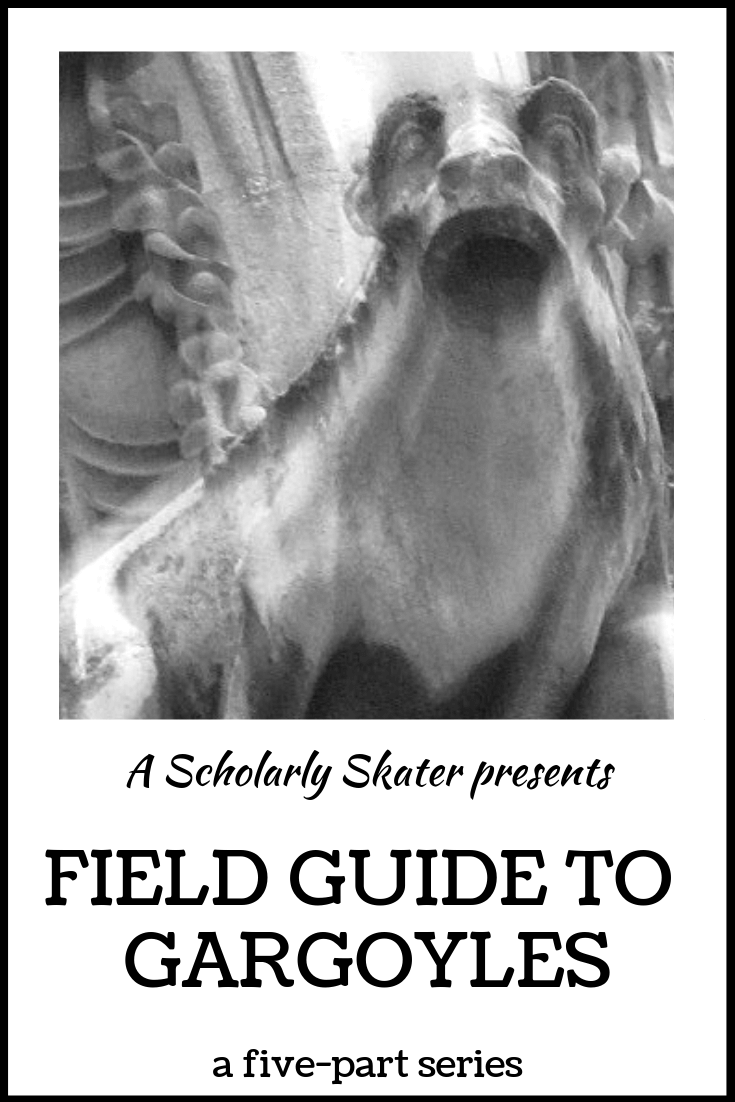Field Guide to Gargoyles, Part One
Gargoyles – the amusing, fantastical, and sometimes creepy little stone creatures that often inhabit the drain spouts of medieval churches – are among my favorite things. Together with their non-functional cousins, the grotesques, gargoyles have long been a source of popular fascination. As a college student, I remember being told that attempting to find a convincing explanation for gargoyles, where so many academics have already failed, would be a fool’s errand. Naturally, I’ve been obsessed with the topic ever since.
With their strange appearances and mysterious meanings, it’s difficult not to feel fascinated by weird and wonderful gargoyles. However, basic facts about their origins, terminology, and interpretation can be difficult to obtain. Because this topic generates much more popular interest than scholarly inquiry, the information most readily available online tends to be questionable, and superstitious stories about gargoyles generally get more attention than the actual facts. It’s difficult to know what to believe. (Just google the word “gargoyles” and check out the wild stuff that comes up!)
In this five-part series, Field Guide to Gargoyles, I will answer common gargoyle-related questions, clarify terminology, and weigh-in on thorny issues about gargoyles’ origins, meanings, and more. I won’t always be able to give you definitive answers, and my information won’t always match up with what you may have read on other, less-discerning websites, but I hope that it will be reliable, informative, and enjoyable.
What is a Gargoyle?

We all think we know what gargoyles are, or at least believe that we recognize them when we see them, but you may be surprised to learn that the definition isn’t what you might expect. Simply put, a gargoyle is a fancy drain spout – part of a gutter system that carries rainwater off a roof. Unlike the common drain spouts you might have on your house, gargoyles take the shape humans, animals, or imaginary creatures. They are usually made of stone and/or metal.
The word gargoyle is worth spending a moment on because of its wonderfully evocative sound. It comes from the Latin word gurguilio, which means “throat”; thus the term refers to the fact that in most gargoyles, the rainwater goes through their throats and out their mouths. (Less commonly, the water may come out of the gargoyle elsewhere.) The word also mimics the gurgling sound that the water makes when rushing through the gargoyle. The French equivalent is gargouille, which, according to legend, was the name of a medieval dragon in Rouen who became the first-ever gargoyle.
It’s very likely that this definition isn’t at all what you expected. We usually think of gargoyles as fantastical, dragon-like monsters on medieval churches like the famous ones at Notre-Dame de Paris. However, we’ve just learned that it’s function, not appearance, that makes a gargoyle. This means that many of the creatures we’re used to calling gargoyles don’t technically fit that description at all.
It’s probably okay to use the popular definition of the word gargoyle in casual conversation, given how widespread that usage is. However, but there will always be purists who take issue with you for doing so. In fact, I regularly get comments on my blog telling me I’ve used the word incorrectly, when in fact I’m merely being colloquial.
What’s a grotesque and how’s it different from a gargoyle?

The image we tend to have in mind when we hear the word gargoyle is more properly called a grotesque. According to the Merriam-Webster Dictionary, a grotesque is something “departing markedly from the natural, the expected, or the typical”(*), so it basically describes these strange forms perfectly. In art terms, it describes a variety of quirky human, animal, hybrid, or imaginary creatures used as artistic decoration. Less commonly, they can be called chimeras, especially when they are hybrids with parts from multiple animals.
Unlike gargoyles, grotesques need not have any practical function, although they may certainly fulfill more symbolic purposes. (More on that in a later installment.) When they appear in architecture, especially medieval churches, grotesques can sometimes look very similar to gargoyles, which is part of why people tend to confuse the two.
Grotesques aren’t just architectural features, though; they also appear in other art forms. They’re most common in illuminated manuscripts, where they tend to decorate the margins and are often termed marginalia, and they can also appear on furnishings, small-scale decorative arts, and more. In addition to their quirky appearances, gargoyles have one additional thing in common with grotesques. Whether carved onto buildings, painted into manuscripts, or otherwise, all these weird little creatures tend to appear on the outskirts of the objects they inhabit; they are never the focal points or the main decoration, but rather the something additional at the edges whose relationship to the main event is unclear. Think of them like an artistic sideshow.

Read the rest of the Field Guide to Gargoyles here!



